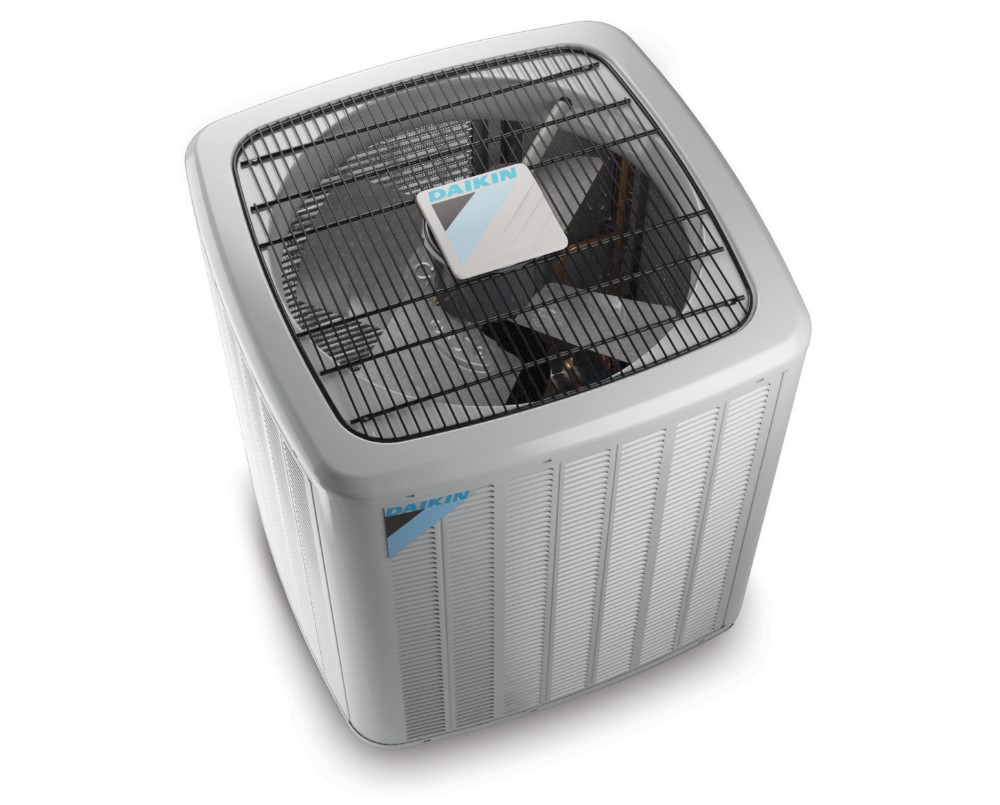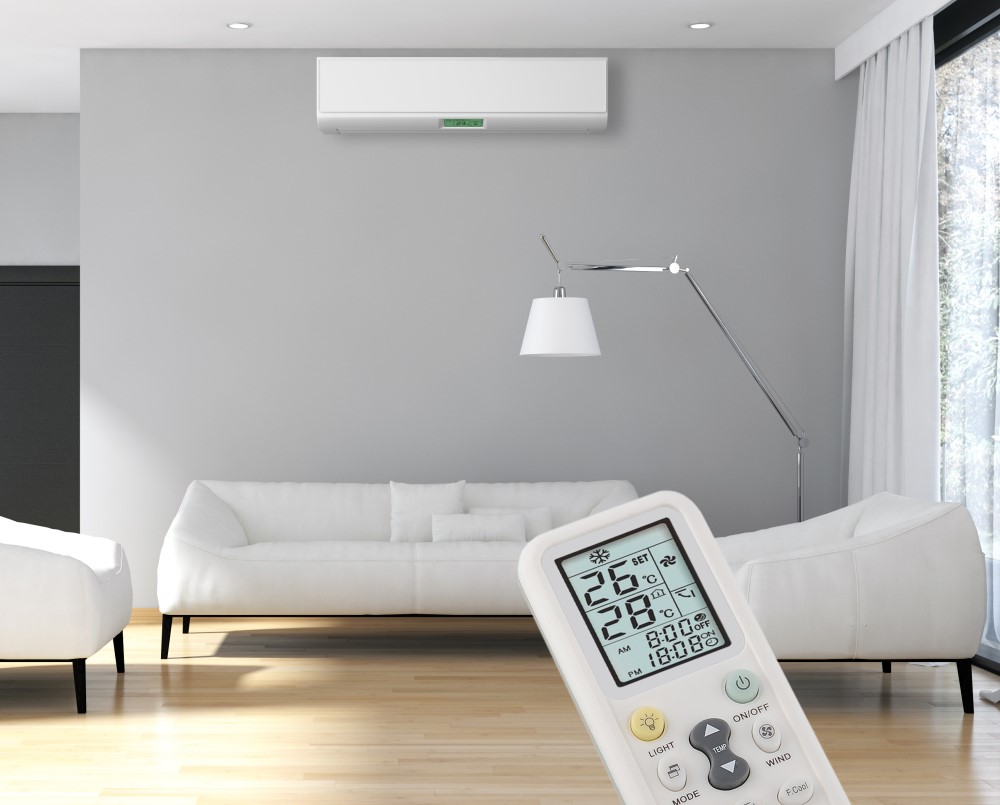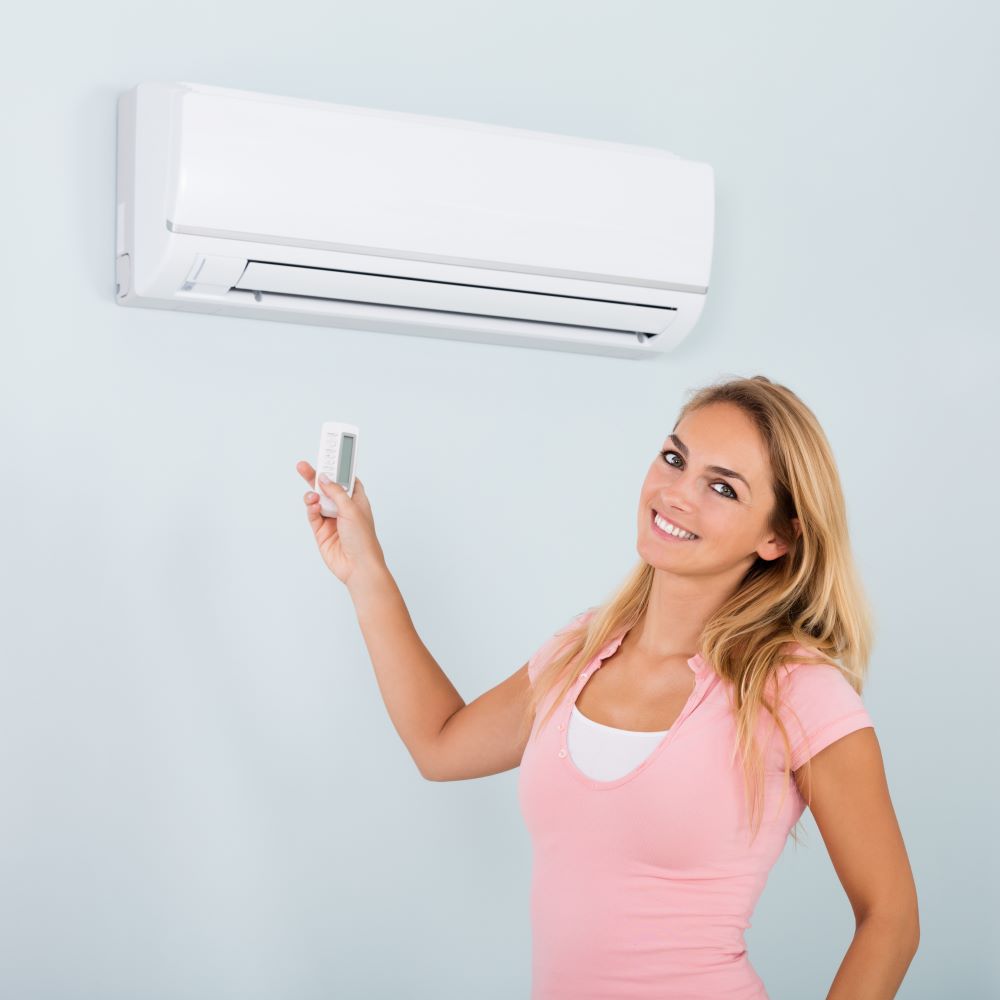
Choosing the right type of air conditioner for your home is basically simple. You will choose a wall-mounted air conditioner if you have baseboard heating, or a central air conditioner if you do not. In the second case, since your home would likely already have a central heating system, it means that it has all the necessary ducts to allow the circulation of air from the central unit.
If you have baseboards and want to opt for a central air conditioner, this choice should be part of a complete conversion project of your equipment to a central system. This is mainly because such a transformation requires major renovations and therefore higher installation costs. Central air conditioners are also more expensive than wall-mounted models. However, this solution may be relevant if you are planning, for example, to finish your basement. You could then take advantage of the fact that the ceiling and unfinished walls are accessible to install a central system.
That said, it is important to know that both types of air conditioners are equally effective. A wall-mounted unit properly chosen according to the surface area of your home and installed correctly will provide cooling just as efficient as a central system. For large houses or spaces with a particular configuration, a wall-mounted solution with a multi-zone model or a second unit as a backup may be considered.
In either case, the most important thing is to choose an air conditioner with sufficient power to ensure consistent cooling throughout your home. Qualified installers have all the necessary skills to help you make the right choice. Take advantage of their expertise!

When you install an air conditioner in your home, you first need to evaluate the basic cooling capacity required to ensure effective air conditioning. This evaluation is done by taking into account different factors, such as the surface area, existing air intakes, insulation quality, the number of floors and windows, the openings between rooms, and the level of sunlight. It goes without saying that a poorly insulated home will require greater power due to cooling losses.
Cooling capacity is measured in Btu/h. As an example to help guide your budget for an installation, 12,000, 18,000, and 24,000 Btu/h models will be suitable for cooling homes of approximately 75 m² (800 sq. ft.), 110 m² (1,200 sq. ft.), and 150 m² (1,600 sq. ft.) respectively, under normal conditions of use.
It is important to choose the right unit based on the space to be cooled. Choosing an appliance that is too powerful will not provide optimal comfort because its cooling capacity will be greater than its dehumidifying capacity. The ambient temperature will drop quickly, but the relative humidity level will remain too high. The result will be cold and damp air, reducing comfort.
Effective air conditioning must ensure both cooling and dehumidification of the ambient air to provide consistent and pleasant freshness.

Before discussing the installation, it is important to distinguish between a wall-mounted air conditioner and a window air conditioner. The window unit is a temporary, removable device in which all components are integrated into a single module attached directly to the window frame. This type of unit is relatively inexpensive, noisier, and has basic features. It is mainly suitable for cooling a single room.
The wall-mounted air conditioner, on the other hand, is a permanent and more sophisticated system composed of two or more units: an outdoor module and, depending on the model, one or more indoor air outlets. This type of system is more powerful and quieter than a window air conditioner and can cool a larger area.
Installing a wall-mounted unit requires drilling an opening of about 7 cm (2 ¾ inches) in the wall to pass the refrigerant line that connects the outdoor motor unit to the indoor air outlet. As with a central unit, you must check the permits and regulations in your municipality regarding the installation of such a system. Quieter and less bulky than central air, the wall-mounted unit is also more discreet.
Depending on the model, a wall-mounted air conditioner can offer advanced features such as a variable-speed compressor, which adapts cooling based on the desired temperature. Once the target temperature is reached, the compressor switches to energy-saving mode and provides only the minimum power needed to maintain it. Some air conditioners are also equipped with a negative ion generator, a feature that promotes healthier air quality for both children and adults, contributing to an enhanced sense of well-being in the home.
As with any purchase of significant value, it is always recommended to shop around to obtain the best quality-to-price ratio for your budget.

The key to a comfortable summer lies more in the absence of humidity than in a lower temperature. In Québec, it is humidity that is unbearable. A temperature of 36 °C in Arizona can feel pleasant compared to 29 °C here, which can feel like 40 °C with the humidex. This persistent humidity affects your sleep, and in turn, your mood and productivity. Carefully choosing the right air conditioner is essential to eliminate as much of this excess humidity as possible.
It is important to consider the overall features of wall-mounted systems, because beyond ventilation capacity alone, you must also take into account their moisture absorption or dehumidification capacity.
Some units have a high ventilation capacity, around 340 cubic feet per minute (CFM), which allows them to reach the desired temperature quickly but at the expense of dehumidification. In other words, the faster the air passes through the system, the less it dehumidifies.
Other units operating at 280 CFM lower the air temperature more slowly but provide better dehumidification, which also helps reduce the temperature and results in superior cooling quality.
Noise level is also an important factor. A difference of three decibels (dB) between two units corresponds to a doubling of noise compared to the quieter unit. For example, Panasonic offers an 11,900 BTU system that generates only 25 dB of noise in cooling mode, the equivalent of a whisper.
The Energy Star logo does not tell you everything either: a powerful system will run for a shorter time, giving it a good Energy Star score, but your room may remain humid. Conversely, a system that ventilates and dehumidifies at the same time will run longer without operating at full capacity, especially if equipped with a variable-speed compressor, while providing greater comfort. A fresh home is much more enjoyable than a cold, damp one.
Before placing a service call.
Difference between cleaning and maintenance?
Should I cover my air conditioner?
When should pipe coverings be installed?
Do you clean air exchangers and ducts?
Are service calls covered by the warranty?
Are remote controls covered by the warranty?
Can you install a unit that was not purchased from your company?
Travel fees.
Minimum travel fees are $230 (including transport and a maximum of 1 hour). $110/hour additional.
Before placing a service call.
Difference between cleaning and maintenance.
Annual maintenance of a mini-split type unit is $340.00 for 1 wall unit, $75/additional unit – ZONE 1.
Annual maintenance of a mini-split type unit is $395.95 for 1 wall unit, $75/additional unit – ZONE 2.
Annual maintenance of a mini-split type unit is $420.95 for 1 wall unit, $75/additional unit – ZONE 3.
The annual maintenance includes:
WE RECOMMEND CLEANING YOUR UNIT BEFORE THE SUMMER SEASON.
What does cleaning include?
Cleaning of a mini-split type unit is $359.95 (recommended every 2 years or as needed) for the first unit and $75/additional units – ZONE 1.
Cleaning of a mini-split type unit is $379.95 (recommended every 2 years or as needed) for the first unit and $75/additional units – ZONE 2.
Cleaning of a mini-split type unit is $420.95 (recommended every 2 years or as needed) for the first unit and $75/additional units – ZONE 3.
Unit cleaning includes:
*We recommend cleaning your unit before the summer season.
**TECH TIP: Call us at the beginning of the year to reserve your spot and benefit from our 10% discounts. Also, watch for our promotions on Facebook, Shopico.ca, and our website.
Where can I get filters?
My unit shows an error code.
My unit is smoking outside.
This condition appears during heating mode when a defrost cycle occurs in cold outdoor temperatures. It is caused by the outdoor unit defrosting and happens approximately every 1.5 hours. The colder it is, the more defrost cycles there will be. The defrost cycle lasts about 10–15 minutes. This is normal.
Product recalls.
My unit is leaking.
My unit is frozen outside.
This condition occurs during heating mode when outdoor temperatures are cold. Outdoor humidity condenses on the outdoor unit. The defrost cycle occurs approximately every 1.5 hours. The colder it is, the more defrost cycles there will be. The defrost cycle lasts about 10–15 minutes. This is normal.
Should I cover my air conditioner?
NO!
With winter approaching, we like to prepare our yard: protecting cedars, covering the lawn, installing snow fences… so why not cover the air conditioner too? The reason is simple: today’s systems are much more sophisticated. In the past, units were mainly electromechanical. Now, more and more electronic components are at the very core of how these systems operate.
When we cover electronic devices outdoors, there is always a risk of condensation when temperatures rise and fall. If you cover your unit, the humidity cannot escape, and this can cause premature wear by damaging electronic parts.
The problem lies in the thin layer of varnish that coats the electronic boards. Some coatings are very thin, offering only minimal protection against electrical arcs caused by insects, small animals, or power surges. A crack in the varnish can allow moisture to enter and damage your communication boards.
If your outdoor unit is located in an area where snow accumulation is significant, we recommend only a protective cover over the top of the unit instead of wrapping the entire system.
Pipe coverings
For those who opted for a metal covering, the duct covering is generally installed in the fall, between October 1 and December 31. If you choose PVC covering, it is installed the same day as the unit.
How can I pay my invoice?
Are service calls covered by the warranty?
Can you install a unit that was not purchased from your company?
For legal warranty reasons, we cannot guarantee the installation or operation of a unit that we did not sell. However, we can safely and legally remove your units in an environmentally responsible manner. We can also issue you a certificate of compliance for the work.
I have a temperature control issue on certain units. Is this normal? Or I get more degrees than requested in heating or fewer degrees in cooling. Is this normal?
Yes, this is a normal condition on multi-zone systems. There can be a temperature difference between what you feel and what is set, because the temperature is read in the air return located above the unit. Also, units that are not actively running may still release warm or cool air, since these systems use the lines and other wall or duct components to store refrigerant. If you leave these units in fan mode, they will circulate warm or cool air.
Do I need to use electric baseboards at the same time? Or should that not be necessary? We have a wall-mounted heat pump.
We recommend heating primarily with the heat pump. Set the desired temperature on your heat pump, then adjust your electric baseboard thermostats to 2° lower than the heat pump setting. This way, you maximize savings by heating with the heat pump, while having the security of backup heat in case of malfunction or reduced efficiency of the heat pump during very cold weather.